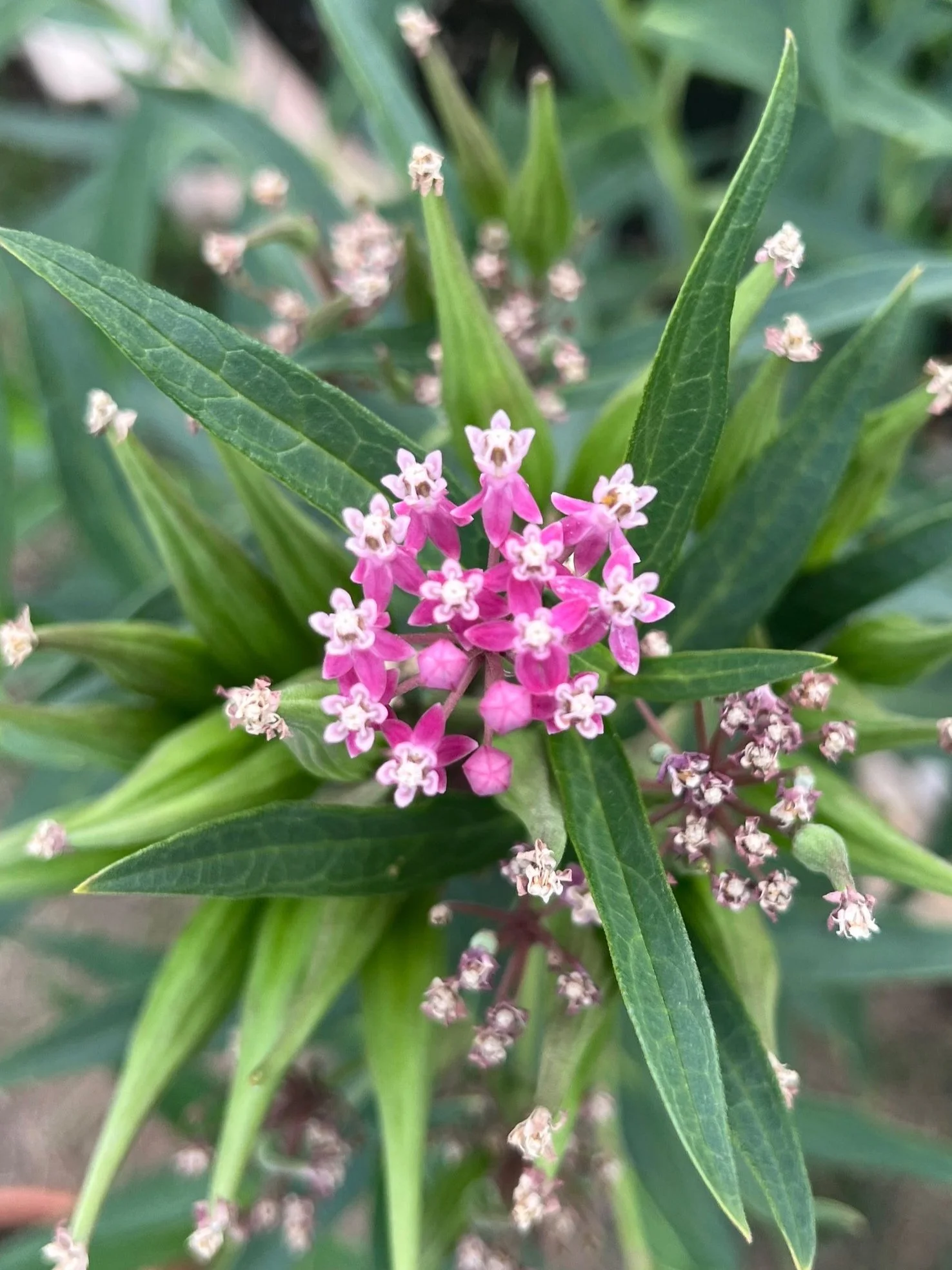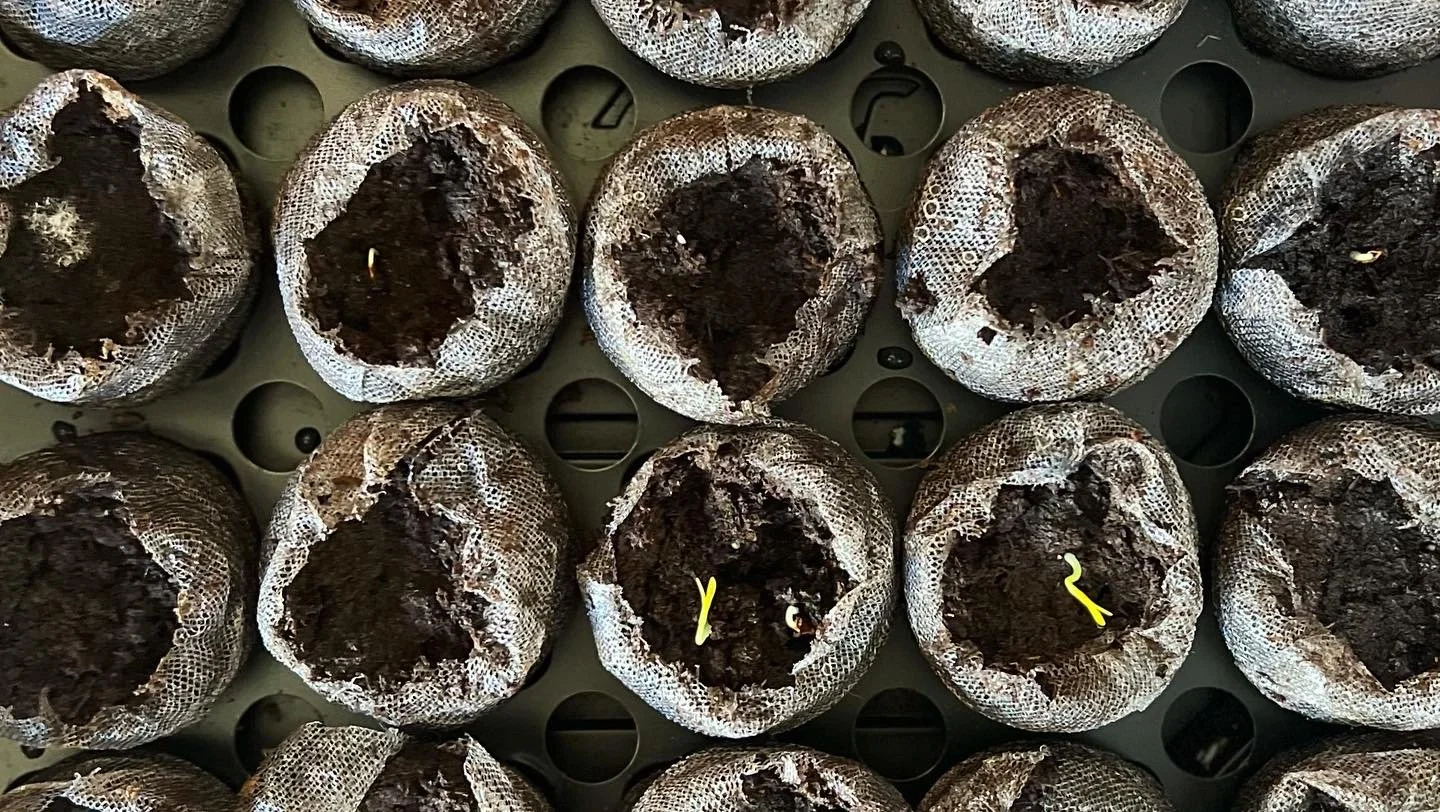
help the pollinators

Planting your Milkweed Seeds
Thank you for picking up seed and sharing a little piece of our garden! Planted the year Isla was born, our garden has helped almost a hundred new monarchs sail into the sky and was the stomping grounds for lots of bees and other pollinating, milkweed-loving friends. This year however we were only visited by one monarch, highlighting the urgent need to help restore their populations, first by rebuilding their habitats.
Now that you have your seeds, you can plant in the Fall or wait until spring if you prefer to be a little more hands on and ensure more success! Showy milkweed takes up a decent chunk of space, so plan accordingly.
Fall
Soil: start with bare soil in an area that has plenty of ability to grow DOWN, milkweed has a long and strong tap root. Remove any other growth and rake or rototill the area
Spread Seeds: spread one by one to ensure you aren’t overcrowding, or scatter them by the handful and when spring comes you can thin out your weaker seedlings
Compact soil: Without covering your seeds, stomp all over the dirt to compact them into the ground
Water: give the whole area a good water and wait for spring!
Spring
Cold Stratify: Milkweed generally benefits from cold stratification if you are going sow your seeds in spring. Wrap them in a moist paper towel, put them in a ziplock bag and store them in the fridge for 30 days
Start in Seed Pods: most local garden stores have a ton of affordable options to get your seeds started. We used this last year with great results! If you would rather use something like an egg carton, look for soil designed specifically to start seeds.
Plant: If you planted in seed pods, transfer the whole pod into the ground after the threat of frost has passed. Milkweed has a very long and strong tap root that will break right through and prefers to establish this root early (not being transferred and re-transferred). Even if most of the leaves fall off after transfer, give it time, after the shock has passed they will most likely grow back!
Where to plant: Milkweed in general loves full sun and Swamp Milkweed (as the name implies) likes it a little more moist than other varieties, so keep it watered a bit more than others!

Building a Colorado Pollinator Garden
-
Milkweed may seem like a strange thing to champion, but for Monarch butterflies it means survival… it is the only plant on which they will lay eggs and caterpillars will feed on. Milkweed used to flourish on our rolling plains, but has been decimated in recent years by modernizations in farming and the use of herbicides, urbanization and, well, probably the fact that it carries “weed” in its name.
With the depletion of milkweed, we have seen a dramatic decrease in monarch populations reaching their migratory wintering grounds. Monarchs are migratory so if food runs out in one place in their path, scarcity quickly thins populations. One of the easiest ways to help is by rebuilding their homes and keeping your garden free from insecticides and pesticides.
Milkweed is easy to grow and each seed packet has enough to create a mini milkweed jungle of your own.
-
Types of Milkweed Native to Colorado
Swamp Milkweed - narrow leaves, abundant pink flowers. As the name implies, prefers a bit more water
Butterfly Weed - tiny leaves, bright orange flowers that bloom late into the season
Showy Milkweed - huge broad leaves with round clusters of star-shaped flowersCreating Habitats for other Butterflies
Black Swallowtails: Parsley, Dill, Fennel & Carrot (two-tailed) Choke cherry, Green Ash
Variegated Fritillary: Pansies, Zinnia, Violets
Common Sulphur: Alfalfa, Clover
Mourning Cloak: Elm, Willow, Cottonwood, Aspen Trees -
Planting so there is always something blooming, ensures a food source for the whole lifecycle of your garden visitors
Spring
Chives
Lilacs
Lavender
Catmint
Rocky Mountain PenstemonSummer
Rocky Mountain Bee Plant
Hoary Vervain
Larkspur
Bee Balm
Gaillardia
LiatrusLate Summer
Aster
Butterfly Bush
Coneflower
Cosmos
Zinnia
Joe Pye WeedFall
Goldenrod
Rabbitbrush
Catmint (again) -
No Pesticides or Insecticides!
Even ones labeled organic can have destructive effects on caterpillars and pollinators.Plant in full sun
The vast majority of pollinator friendly plants thrive with at least 6-8 hours of sun a dayIncorporate various heights
Plants of various heights provide shelter during storms and from all your varied visitors!Create Mud Puddles
Butterflies need to flit about it mud puddles to gain certain nutrients they cannot get from nectar alone.Shelter
Consider adding butterfly houses and other small shady structures for caterpillars to pupate on and for butterflies to shelter in














